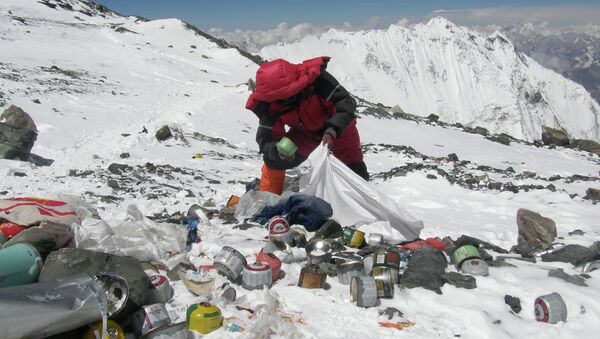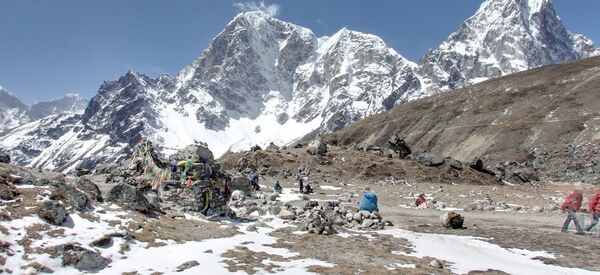In April 2015, a 7.8 earthquake shook Everest, triggering catastrophic avalanches that killed at least 18 people on the mountain and injured dozens. Camp Two, 21,000 feet above sea level, was heavily damaged by the snows and has been abandoned ever since.
While the survivors – and those who didn't make it – were removed from Camp Two, the remains of their aborted expeditions are still there. Abandoned tents and boxes of supplies litter the camp. And the camp site isn't the only mess on the slopes – Everest becomes a more popular tourist destination every year, and more climbers mean more garbage.
Already, the Expedition Operators Association of Nepal (EOA) has sent heavy-duty canvas bags capable of holding 176 pounds of trash up to Camp Two to begin cleaning the site.
Climbers would be expected to pitch in with the cleanup before helicopters fly the trash back down the mountain.
Through this method, the Nepalese government hopes "to bring down the trash without any extra cost, using helicopters that return empty after dumping climbing ropes at the high camp," Tourism Department official Durga Dutta Dhakal told Reuters.
Himalayan Experience guiding company owner Russell Brice issued a statement where he said he would pay Sherpas $2 for every kilogram (2.2 pounds) of trash carried down from Camp Two or lower. He would even provide them with bags to collect the trash.
Everest's climbing season begins in April and lasts through May, as this is when weather conditions are most favorable. In 2016, more than 600 people summited the mountain.
For Nepal, the second poorest country in Asia, mountain-climbing tourists are a major source of revenue. The country claims eight of the world's 10 highest peaks, and tourism makes up 4 percent of their national economy.




